
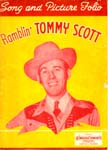


|
 |
|||||||||
|
About The Artist
August 7, 2023: In Progress
Yet, as we proceeded to download the Nashville radio logs of programs on Saturday nights from the newspapers, we came across the name of someone that raised an eyebrow. The log in The Nashville Tennessean listed at 8:00pm on April 17, 1926, "The Human Fly," Harry Gardiner will speak and "Uncle Jimmy" Thompson, old time fiddler, will play. (One Hour)" It may seem surprising to see such a name listed. But remember, this was before the Opry became known as the country music show it became. It was the era of early radio. Perhaps he was seen as a novelty. But it was part of the news of the day as Harry was in Nashville, to climb the Andrew Jackson Hotel. This set off the urge to do more research. He became well known, his exploits published in newspapers across the ocuntry. But as much as he was known, little is known of when he wsa born or when he died. Thus, our story begins. Harry H. Gardiner gained fame as "The Human Fly." But as much fame he found and was documented, very little is known about his early life and the end of his life. Let's see what trails history provides to a person who took on a unique 'profession.' The first mention we find of Harry is in a short paragraph in the Richmond Times-Dispatch in August 1905. This 'event' that was being promoted entailed Mr. Gardiner climing the flag poles of the Jefferson Hotel on a Saturday afternoon. It says he was to 'paint' the flag poles. Whether that was just another way to say he was 'climbing' the flag poles we do not know. The flagpoles were some 250 feet "above the street." They wrote, "Mr. Gardiner will be put to the test to prove the appellation of "the fly" is (not) a misnomer." He was to give an 'exhibition' if 'people are assembled in the street below.' In May of 1905, a short blurb in a 'Personal' column indicated that Gardiner: "...who holds the world's championship as the "Human Fly," accomplishing feats that have never been rivalled in steeple climbing..." upon arriving in Macon, GA. The article stated that Gardiner had 'retired from the business' and was then representing the Globe Carpet and House-Cleaning Company of Detroit. He was said to have a good group of workers under his wings and they were receiving a 'warm welcome' in Macon. Complicating research of his early life was the discovery of a Harry H. Gardiner of New York who was VP of the Bush Terminal Company. He resigned as general freight and passenger agent of the Buffalo & Susquehanna Railroad to become VP o fthe Bush Terminal Company in 1905. Harry's early work seemed to be climging steeple jacks. Newspapers seemed to like to embellish his work when they wrote of his efforts. In June 1905, he was in Columbia, SC. "There are many periolous professions, ranging from that of a powder mill employee to that of a baseball umpire. But that of the steeple jack is perhaps the most periolous of them all. Yesterday a man of this professoin climbed the slender flag pole which reaches skyward from the dome of the State house. This daring young man was Harry H. Gardiner, who styles himself as the "Human Fly." They said his business card noted he was "engaged in the repairing of church steeples and the like." He climbed the pole, replaced the old rigging which had rotted and put a new one on. Then he attached a small seat to pull himself up the pole again to paint it. They wrote, "His life seems to have been a varied one and his performances while in mid air have been highly praised by the newspapers." How many people would want a job where you have tens of thousands of people watching you and in a macabre sense, seeing you maybe fail the one time, the last time? In 1915, when he was perhaps 44 years old, he climbed the walls of the Allentown National Bank building. He did have a bit of the entertainer in him. At the halfway point, he gave a short speech. Then the crowd gasped a bit when he hung on to a stone with just his finger - a single finger - and dangled his feet in the air. He did not make the attempt to get on the roof though; the cornice and coping projected about three feet; Gardiner stated he did not think the stones would hold his weight. If that wasn't enough, he later climbed the flag pole on the roof of the Hotel Allen. The local paper told readers that about 10,000 people watched the event. He collected $140 from the Allentown event. The next day, he climbed the walls of the five story E. P. Wilbur Trust Company at South Bethlehem, PA. In the afternoon, he clibmed the bank building at the Circle in Easton. It was the era of movie theaters showing news reels as part of their business. The Electric theater in St. Joseph, MO booked him for a week to discuss how he did his feats. He told the local readers how he did it. "How do I do it? There are four things which make it possible for me to do this, and they are things which should be taught in every school in the land and in every home. First, I had to overcome fear (mental and physical fear). Then, it took will power. In the third place, absolute concentration is necessary. Finally, perseverance completes the training." He did matinee and night perforamnces and explained to audiences what was required to develop the nerve and physical ability to climb buildings. But some of those early, smaller articles would prove to be helpful in documenting his life. It seems he had taken a fancy to one Regina L. Wright of Central City, NE. He was living in Los Angeles, CA at the time. But in November of 1905, the two of them were in Harrisburg, PA. The took out a marriage license and were married at the court house by Squire Voll. They were accompanied by four friends as they took their vows.
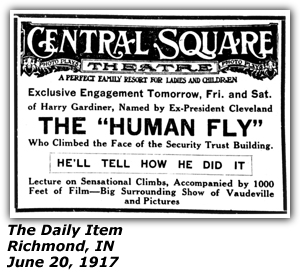 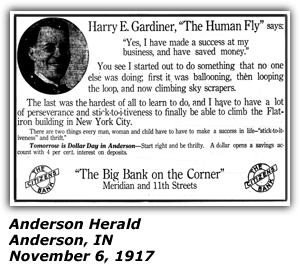
 
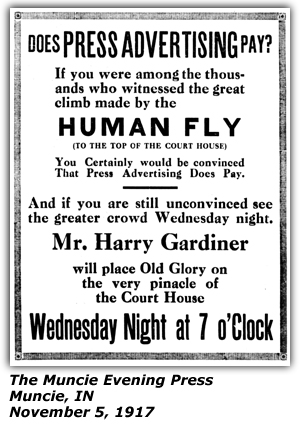  A career as a 'steeple jack' was not what started his career off. He was enrolled in Columbia to become a surgeon courtesy of his parents. But, while he was in college, he got into aeronautics and did sensational acts with a balloon. But others began to copy his work. That led him to try something new that was unique - the bicycle. He was the first person to 'loop the loop' on a wheel. He was in New York several years prior to 1921 and walking on Fifth Avenue the thought of climbing a building came to mind. He examined the Flatiron structure that was towering over him. He did a closer examination of the skyscrapper, noticing the "little crevices between the marble blocks at the base and noted the construction above." He began to train - for eight weeks. At night he would go to buildings near his home. As his training continued, his confidence and his mental acuity grew. He set a date for the day he would attempt to climb the Flatiron building. On that date, he began his ascent. But there were no crowds gathered around - just a friend to witness this attempt. He had started this during when the noon time crowds were on the streets. People began to take notice of this guy climbing the building and started to stare and perhaps shaking their heads at this crazy person. But he was focused on this initial climb; he did not notice the crowd forming below to watch him. The crowd drew and began to shift from cynical to being astonished at what the man was doing. He reached the coping of the roof and crawled over. A cheer rose from the crowd below on the street.
"That was my start. That was the only time I was ever thrilled — and that was simply the thrill of satisfaction that comes when a man accomplishes what he sets out to do." Harry H. Gardiner — January 21, 1921; Chattanooga News"
 
One of the more unique articles or photos found during research were several sketches drawn by
H. A. Stillman in the Sioux City Journal in 1916. The caption accompanying the sketches: An article in a Chattanooga newspaper in 1921 provides some personal details in addition to some details of his work ethic or keys to his success. The article stated he had three children and was living in Newport News, VA. He only wanted to make a few more climbs and then he wanted to retire. He felt he was fixed for life. His wife had already saved quite a bit for them to retire on. But the article did not provide names or other details of his family.
"My greatest risk is the man who built the building. If he has done his work well I'm secure. " Harry Gardiner — January 21, 1921; Chattanooga News By the end of 1929, he seems to have dropped out of site. If we are to believe he was born in 1871, he would be 58 years old; perhaps his body was not the same as it was. Or speculation is that he went over seas as states began passing laws restricting his type of work or entertainment. As research continued into the 1930's, the mentions were all in newspaper columns writing about events from 10 years ago, 15 years ago, etc. Harry had seemingly disappeared.
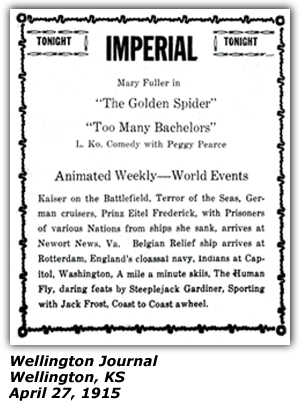  His Hands Were Insured There were numerous stories reporting his arrivals at various towns to climb their tall buildings. In some cases, one learns a bit more about the way he operated. As one paper described it, "The essential part of the man's unusual 'trade', 'profession,' or whatever should be classified the life of a man who climbs over highly polished expanses of a skyscraper builing, are his fingers. He uses only the first three fingers of each hand n his ascents and they are insured for $50,000. As for his life, is of course non-insurable as long as he persists in his calling of extreme hazard." Dates of Climbs and Attendance as reported:
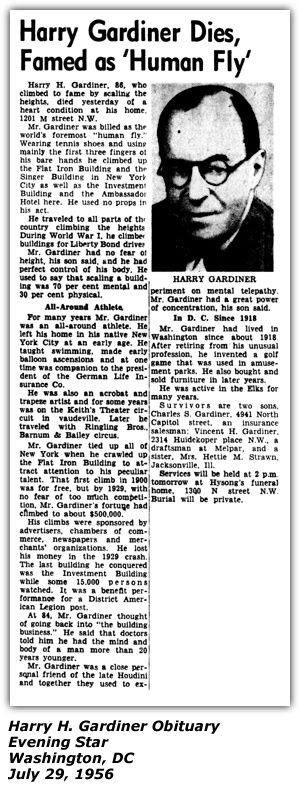
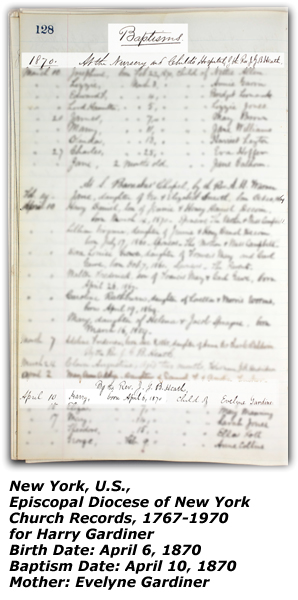 Harry Gardiner Dies, Famed As 'Human Fly'
Harry H. Gardiner, 86, who cllmbed to fame by scaling the heights, died yesterday of a heart conditlon at his home, 1201 M street N.W. Mr. Gardiner was billed as the world's foremost "human fly." Wearing tennis shoes and using ma1n1y the first three fingers of his bare hands he climbed up the Flat Iron Building and the Singer Building in New York City as well as the Investment Building and the Ambassador Hotel here. He used no props in his act. He traveled to all parts of the country climbing the heights. During World War I, he climbed buildings for Liberty Bond drive. Mr. Gardiner had no fear of height, his son said and he had perfect control of his body. He used to say that scaling a building was 70 per cent mental and 30 per cent physical. All-Around Athlete For many years Mr. Gardiner was an all-around athlete. He left his home in his native New York City at an early age. He taught swimming, made early balloon ascensions and at one time was companion to the president of the German Life Insurance Co. He was also an acrobat and trapeze artists and for some years was on the Keith's Theater circuit in vaudeville. Later he traveled with Ringling Bros., Barnum & Bailey Circus. Mr. Gardiner tied up all of New York when he crwled up the Flat Iron Building to his peculiar tlent. That first climb in 1900 was for free, but by 1929, with no fear of too much competition, Mr. Gardiner's fortune had climbed to about $500,000. His climbs were sponsored by advertisters, chambers of commerce, newspapers and merchants' associations. He lost his money in the 1929 crash. The last building he conquered was the Investment Building while some 15,000 persons watched. It was a benefit performance foa District American Legion post. At 84, Mr. Gardiner though of going back into "the building business." He said that doctors told him he had the mind and body of a man more than 20 years younger. Mr. Gardiner was a close personal friend of the late Houdini and together they used to experiment on mental telepathy. Mr. Gardiner had a great power of concentration, his son said. In D. C. Since 1918 Mr. Gardiner lived in Washington since about 1918. After retiring from his unusual profession, he invented a golf game that was used in amusement parks. He also bought and sold furniture in later years. He was active in the Elks for many years. Survivors are two sons, Charles S. Gardiner, 4941 North Capitol Street, an insurance salesman; Vincent H. Gardiner, 2314 Huidekoper place N.W., a draftsman at Melpar, and a sister, Mrs. Hettie M. Strawn, Jacksonville, Ill. Services will be held at 2 p.m. tomorrow at Hysong's funeral home, 1300 N Street N.W. Burial will be private. 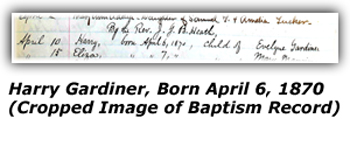
The additional research was done because sources on the internet were not providing a definitive answer as to his birth and his death. Wikipedia wrote this of his death: "Gardiner reportedly moved to Europe after New York enacted legislation forbidding anyone from climbing on the outside of buildings. Details surrounding his death are unknown, but a person matching his description was found beaten to death at the base of the Eiffel Tower in 1933." Thus, the newspaper obituary was included in this article and also a conversion to readable words as well to settle that aspect of his life. After finding his obituary, other facts in his life became known. He married the former Regina Wright of Omaha, NE on November 13, 1905. At the time they were married, he was 35 and she was 21. She was born in February 1886, a native of Nebraska. Her parents were Morgan and Clara Wright.The family moved to San Diego, but tragedy struck in January 1919 - he got sick with influenza and eventually passed away. Digging further with some hints that he was born in 1870, ancestry.com shows a baptismal record for a Harry Gardiner on April 10, 1870 with a birth date of April 6, 1870. The baptism took place at the City Mission Society in New York City. His mother's name was listed as Evelyne Gardiner. Further research via the internet reveals that the Mission Society began in 1812 to provide food, clothing and other forms of material assistance to the urban poor of 19th century New York City. If this is Harry, this may indicate his early life was poor. No information could be found about his father. No other information could be found about Evelyne Gardiner. Ancestry does show a pointer to another Harry Gardiner, but the link to the Find-A-Grave site shows a birth date of 1871 which would indicate an erroneous citation / reference. Thus, it appears he was born on April 6, 1870. This record seems to settle the nagging thought — what was his date of birth. Some articles stated he was born in 1871. Other articles we found would state he was 54 or 52 years old but did not back up the 1871 date. While it may not be as definitive as one might like, it would be up to others to find another answer. Ancestry.com provided a baptismal record. Harry and Regina had two sons, Vincent Harold Gardiner (B: August 14, 1911 (Detroit, MI) — D: July 1978)) and Charles Scholly Gardiner (B: February 13, 1908 (Detroit, MI) — D: ) Credits & Sources
Sound Sample—(YouTube Video Format)
|
| Printer Friendly Version |
Hillbilly-Music.com
Yes, Hillbilly Music. You may perhaps wonder why. You may even snicker. But trust us, soon your feet will start tappin' and before you know it, you'll be comin' back for more...Hillbilly Music.
Hillbilly-music.com ...
It's about the people, the music, the history.
|
Copyright © 2000—2023 Hillbilly-Music.com
|
||||